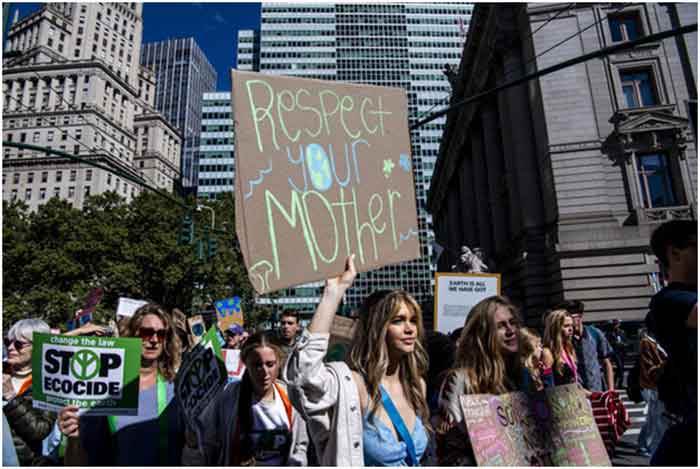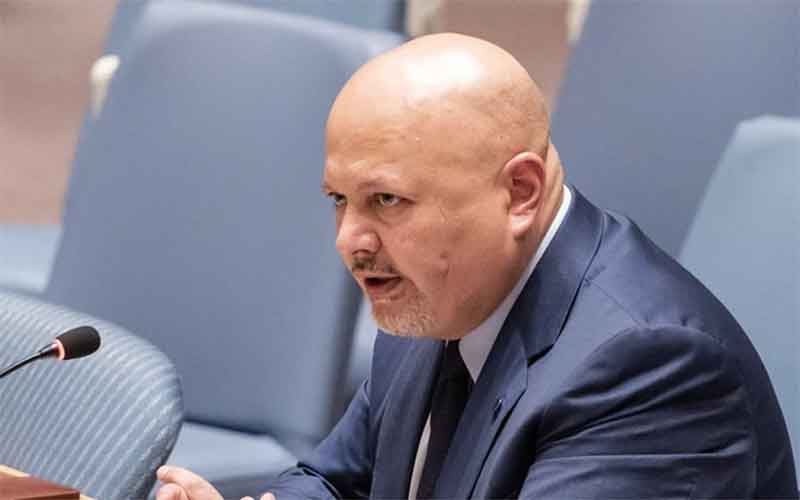Drawing from U.S. case law and legislation, an argument for climate action centered on birthright equity is building momentum.

Planet Earth is in crisis. Climate change is accelerating, biodiversity is crumbling, and entire ecosystems are collapsing. Despite significant successes over the past 40 years, the animal rights, environmental conservation, and wildlife preservation movements of the past 40 years are all at a crossroads. The time calls for re-focusing these nature-based movements more effectively, and the United States Constitution can point the way.
Misdirection and Missed Opportunities in Climate Action
Technology-based solutions to the climate crisis abound, but they have failed to prevail against a tide of misdirection and missed opportunities.
In the U.S., one well-documented obstacle is the countervailing force of fossil energy stakeholders. In 1984, for example, the Environmental Protection Agency collaborated with ICF, a global consulting and technology services provider, to produce a climate policy roadmap titled “Greenhouse Effect and Sea Level Rise: A Challenge for This Generation,” only to be met with a pervasive, industry-funded climate misinformation campaign.
In the following decades, the political water for this campaign has been carried mainly, though not exclusively, by members of the Republican party.
Concurrent with the emergence of the Republican-led Tea Party movement during the Obama administration, Republican officeholders and pundits stepped up their rejection of the sustainability solutions outlined in the United Nations Agenda 21 program. They also focused on public disapproval of specific technologies, including range anxiety over electric cars, the bankruptcy of the U.S. solar manufacturer Solyndra, and the replacement of the incandescent light bulb.
Against this backdrop, it is little wonder that the American electorate has consistently failed to prioritize a robust national policy on climate action. While Democratic presidents have taken some steps to address the climate crisis since the 1980s, the administrations of Bill Clinton and Barack Obama have been squeezed between two members of the Bush family with ties to fossil energy industries and Donald Trump, who campaigned on a fossil energy platform.
A clash of goals within the Democratic party has also clouded the conversation. The anti-corporate messaging of consumer advocate Ralph Nader arguably distracted attention from the climate-focused campaign of former Vice President Al Gore in 2000, and Vermont Senator Bernie Sanders’s charges of corporate coziness, corruption, and process rigging drew the public gaze away from the climate pillars in Hillary Clinton’s 2016 campaign.
The 800-Pound Gorilla in the Climate Action Room
The election of President Joe Biden marked a turning point in the prioritization of climate action and social justice, capped by the passage of the landmark Inflation Reduction Act (IRA) on August 16, 2022.
Also known as the “Climate Bill,” the IRA is widely credited with stimulating public and private sector investment in clean technology to accelerate global decarbonization. However, a more profound challenge remains, and the Earth will continue to track toward biodiversity loss and climate crisis until it is confronted.
The 800-pound gorilla in the room is the linear model of economic development that rose to prominence with the Industrial Age. Primarily but not exclusively promoted by the fossil energy industry, the linear model requires a nonstop spiral of extraction, consumption, and waste predicated on a growing pool of workers and consumers.
This linear model—in which growth is tied to boundlessly increasing gross domestic product (GDP) per capita—is in direct conflict with ecosystems and biodiversity, and it cannot be resolved by clean technology.
Electric vehicles, for example, resolve tailpipe emissions. However, without a holistic sustainability policy, they will continue contributing to the sprawling infrastructure of car ownership, including raw materials mining and processing, manufacturing facilities, roads, parking lots, and other elements of the built environment.
Fetal Worship and the Missing Link
A singular focus on clean technology also neglects to recognize the central role of women’s agency and reproductive rights in climate action.
The relationship between reproduction and the linear economy has reached full flower in Republican officeholders who claim to represent fetal rights while deploying their legal and legislative authority to thwart social safety net programs, discriminate against gender-nonconforming persons, and stop investors and businesses from pursuing environmental and social goals.
The anti-abortion, anti-birth-control movement is part and parcel of the linear economy, which treats women as part of the production and consumption chain. Their role is to create new lives regardless of the cost to their own well-being and their children.
“Society, as reflected in our government and the policy implemented by our democratically elected representatives, must do what’s best for children, regardless of economic impact, which must include social safety programs designed to give each child a fair start in life and climate reparations for the crisis we have caused and are leaving to them as our legacy,” argues Jessica Blome, a public interest attorney who frequently represents the Fair Start Movement, a nonprofit organization that promotes the convergence of social, eco, and reproductive justice.
“That we are even debating the value of women’s autonomy as an economic driver—as opposed to an inalienable human right—is exactly why our culture needs to think differently about women and children,” argues Blome.
Centering Reproductive Rights in Climate Action
Some business-oriented organizations recognize that women’s agency must be addressed in any sustainable model of economic development. In contrast to the linear model, they advocate for a circular economy that prioritizes lifecycle sustainability and human rights. The Helen MacArthur Foundation, for example, advocates for reproductive rights within its circular economy mission.
The 21st-century focus on human rights contrasts with past formulations of population-focused climate advocacy. For instance, in 2020, the Sierra Club acknowledged its complicity in promoting a popular but widely criticized theory about overpopulation in the 20th century. The organization faced charges of racism and xenophobia until it publicly asserted that equity must be centered in any discussion of climate and population and that women’s agency plays a central role in equity.
Talk Is Cheap
In May 2022, the Sierra Club detailed its position on sexual and reproductive rights, describing them as “inalienable human rights that should be guaranteed for all people with no ulterior motive.”
“A human rights-based approach to climate justice centers a person’s bodily autonomy and individual choice,” they emphasized.
That was an important contribution to the climate conversation. However, the same statement notes that the Sierra Club’s Gender Equity and Environment Program was sunsetted in 2021 and was not replaced with a follow-on program.
Regarding population issues, the statement notes that the National Sierra Club Organization will “not be active regarding this subject area as of May 21, 2022.”
Sierra Club is not the only organization to withdraw itself from direct action in the reproductive rights area.
Another example involves the nonprofit organization Animal Legal Defense Fund (ALDF). In 2018, ALDF joined with two other organizations and several individuals in a landmark, high-profile climate action and wilderness preservation lawsuit against the U.S. government for failing to protect public lands from climate change.
“These cases…required treating the spectrum of human freedom to which they referred as anchored to a state of nature,” explains Carter Dillard, the former ALDF attorney who worked on the case.
Known as the “Rewilding” case, the ALDF lawsuit argued that one of the unique features of the U.S. Constitution is its foundation in social contract theory, in which individuals consent to laws and policies that protect each other and future generations.
Dillard left ALDF in 2019 after the organization abruptly withdrew its lawsuit. He cites pressure from Our Children’s Trust, a nonprofit public interest law firm that has filed several lawsuits on behalf of youth plaintiffs, and others, to withdraw the case over its focus on climate restoration, biodiversity restoration, and ecosocial birth equity, all of which undermine the linear economic model.
Next Big Step for Climate Action
Regardless of some faltering steps, the Constitution-based case for climate action continues to build momentum, drawing from U.S. case law and legislation recognizing that birthright equity for all children is written into the nation’s founding in the form of birthright citizenship.
The concept of birthright equity has manifested with increasing force in the U.S., from the termination of chattel slavery in the 19th century to 20th-century laws establishing children’s right to education and safety, including labor and exploitation protections, as well as social safety net programs focusing on women and families, and the extension of universal voting rights to age 18 and up.
The formalization of ESG (environmental, social, governance) business and investment principles in recent years has further supported birthright equity within the framework of corporate DEI (diversity, equity, inclusion) programs, as do provisions of the 2021 Bipartisan Infrastructure Law as well as the IRA.
The focus on birthright equity and children’s rights has helped to expand the field of climate action into a more holistic endeavor than technology alone can offer. The next big step is to advance the agency of women, girls, and anyone capable of delivering a child to the world.
Mwesigye Robert, a co-founder of Rejoice Africa Foundation, a nonprofit group that promotes climate restoration and family policy, argues that, in most cases, political leaders promote climate responses that are ultimately unrealistic because they are top-down solutions. “They have come up with well-meaning centralized climate responses in their speeches and proposals, but none of these are implemented effectively,” Robert says.
His organization advocates the “Care Group” model, an approach primarily employed in international development contexts that promotes social and behavioral changes through peer-to-peer knowledge sharing, often led by mothers sharing insights. “Effective climate restoration must be decentralized to the affected communities at the grassroots level.”
The Republican-led effort to compel pregnancy into a linear economy model has had some recent successes, including at the U.S. Supreme Court. To restore the path of progress, all organizations—animal rights, environmental, and wildlife conservation—will need to engage in a unified effort that restores and expands reproductive rights as the foundation of human rights, birth equity, and a sustainable society.
Tina Casey has been writing about sustainability, the global energy transition, and related matters since 2009. She regularly contributes to CleanTechnica and TriplePundit, focusing on corporate social responsibility and social issues. She is a contributor to the Observatory.














































